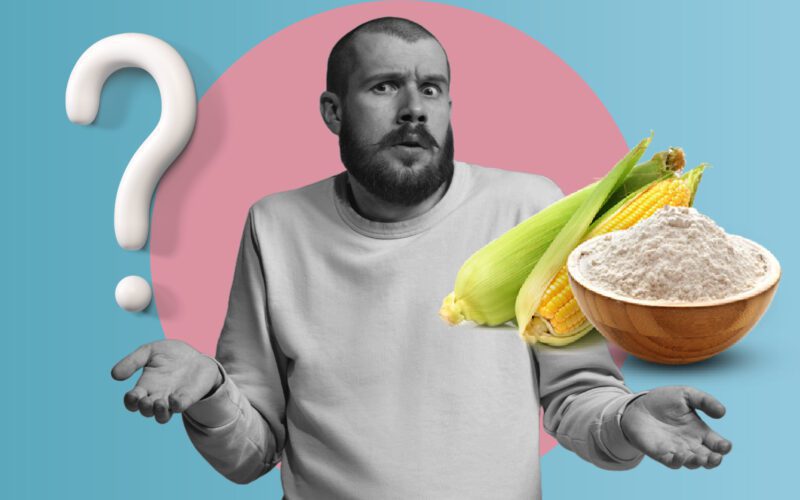Table of Contents Show
Cornstarch is a common ingredient in many recipes, especially as a thickener for sauces, soups, and desserts. But did you know that some people eat cornstarch by itself, right out of the box? This may sound strange and even unhealthy, but there are actually some reasons Why Do People Eat Cornstarch. In this article, we will explore the possible benefits and risks of eating cornstarch, as well as some alternatives that may be better for your health.
What is Cornstarch and How is it Made?
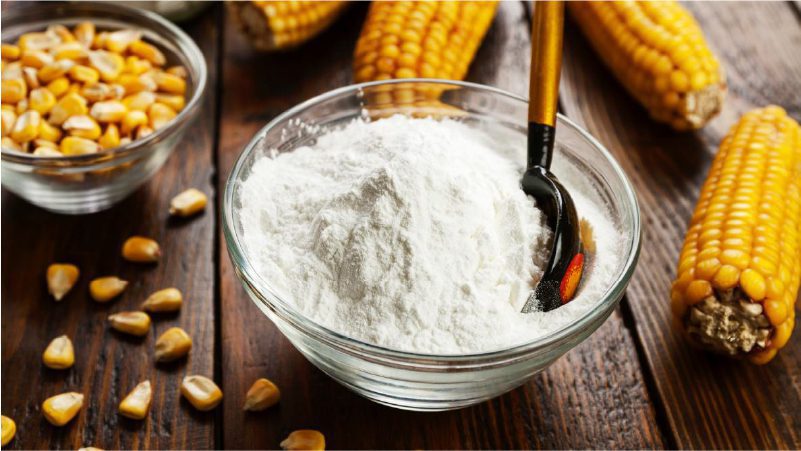

Cornstarch is a fine, white powder that is made from the starch of corn kernels. It is also known as cornflour in some countries. To make cornstarch, the corn kernels are soaked, ground, and separated into different parts. The endosperm, which is the starchy part of the kernel, is dried and processed into a powder. The other parts, such as the germ and the bran, are removed and used for other purposes.
Cornstarch is mostly composed of carbohydrates, with very little protein, fat, fiber, vitamins, or minerals. One tablespoon (8 grams) of cornstarch provides about 30 calories and 7 grams of carbs. Cornstarch has a high glycemic index, which means that it can raise your blood sugar levels quickly after eating it.
Why Do People Eat Cornstarch?
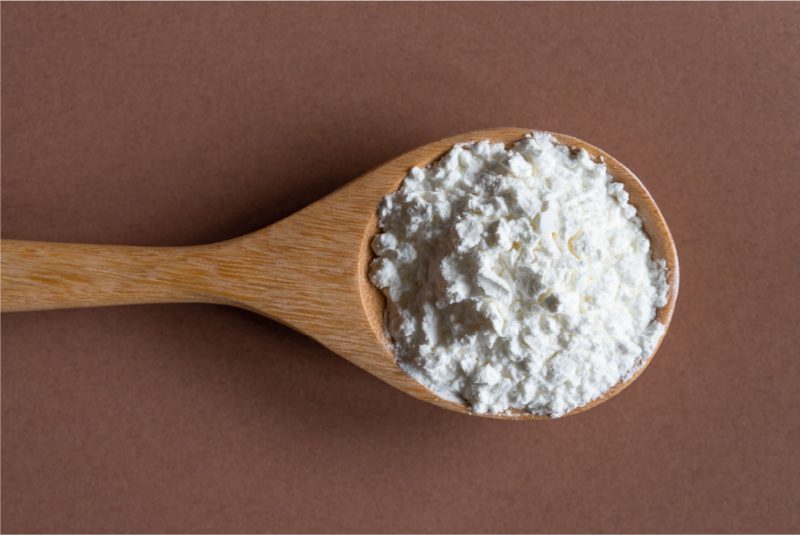

There are several reasons why do people eat cornstarch by itself or mixed with water. Some of them are:
- Pica: Pica is a condition that causes people to crave and eat non-food items, such as dirt, clay, paper, or starch. Pica can be caused by various factors, such as nutritional deficiencies, mental disorders, pregnancy, or cultural practices. People with pica may eat cornstarch to satisfy their cravings or to cope with stress or anxiety. However, eating cornstarch can be harmful to their health and may worsen their condition.
- Weight loss: Some people may eat cornstarch as a way to lose weight or control their appetite. They may think that cornstarch is low in calories and can fill them up without adding much to their daily intake. However, this is not true. Cornstarch is high in carbs and can spike your blood sugar levels, which can lead to hunger and cravings later on. Eating cornstarch can also interfere with your digestion and metabolism and cause weight gain instead of loss.
- Blood sugar regulation: Some people may eat cornstarch to regulate their blood sugar levels, especially if they have diabetes or hypoglycemia. They may believe that cornstarch can provide a slow and steady source of glucose that can prevent blood sugar fluctuations. However, this is also not true. Cornstarch has a high glycemic index and can cause rapid spikes and drops in blood sugar levels. Eating cornstarch can also increase your insulin resistance and worsen your diabetes or hypoglycemia.
- Cancer prevention: Some people may eat cornstarch to prevent or treat cancer. They may think that cornstarch can inhibit the growth of cancer cells or enhance the effects of chemotherapy or radiation therapy. However, there is no scientific evidence to support this claim. In fact, eating cornstarch may increase your risk of cancer by promoting inflammation and oxidative stress in your body.
What are the Risks of Eating Cornstarch?
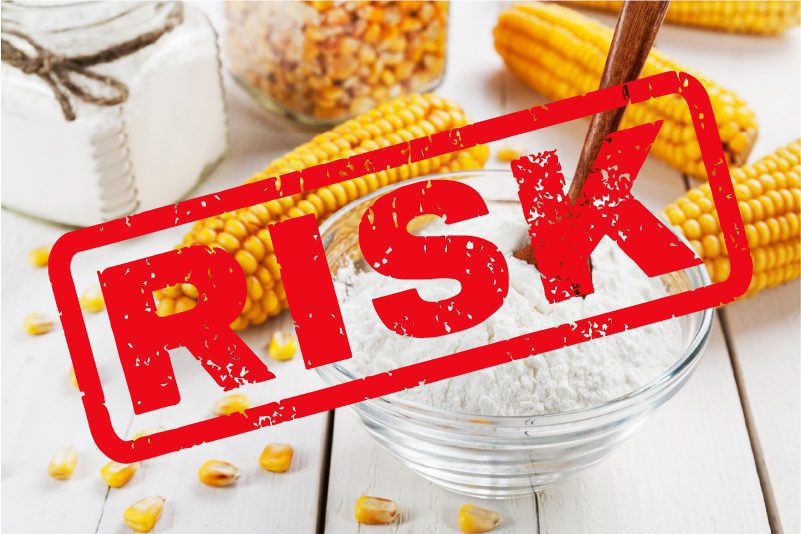

Eating cornstarch by itself or in large amounts can have several negative effects on your health. Some of them are:
- Digestive problems: Eating cornstarch can cause digestive problems, such as bloating, gas, constipation, diarrhea, or abdominal pain. This is because cornstarch is not easily digested by your body and can interfere with the normal function of your digestive enzymes and bacteria. Eating cornstarch can also reduce your absorption of other nutrients from your food.
- Heart disease: Eating cornstarch can increase your risk of heart disease by raising your blood pressure, cholesterol, triglycerides, and inflammation levels. This is because cornstarch is a refined carbohydrate that can cause oxidative stress and damage to your blood vessels and heart. Eating cornstarch can also increase your weight and body fat percentage, which are also risk factors for heart disease.
- Diabetes: Eating cornstarch can worsen your diabetes or increase your risk of developing it by impairing your insulin sensitivity and glucose tolerance. This is because cornstarch can cause rapid spikes and drops in your blood sugar levels that can damage your pancreas and other organs involved in glucose metabolism. Eating cornstarch can also increase your appetite and cravings for more carbs and sugar, which can further worsen your diabetes.
- Allergies: Eating cornstarch can cause allergic reactions in some people who are sensitive or intolerant to corn or its derivatives. The symptoms of corn allergy can include hives, itching, swelling, sneezing, coughing, wheezing, nausea, vomiting, diarrhea, or anaphylaxis. If you have a corn allergy, you should avoid eating cornstarch and any products that contain it.
What are the Alternatives to Eating Cornstarch?
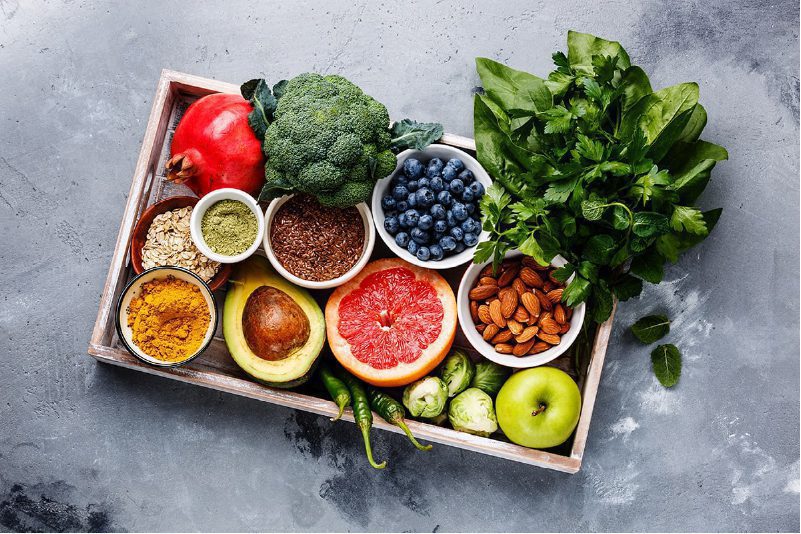

If you are eating cornstarch for any of the reasons mentioned above, you should stop and seek professional help. Eating cornstarch is not a healthy or effective way to deal with your health issues or cravings. There are better alternatives that can help you improve your health and well-being. Some of them are:
- Eat a balanced and nutritious diet: Instead of eating cornstarch, you should eat a balanced and nutritious diet that includes a variety of foods from all the food groups. You should eat more fruits, vegetables, whole grains, lean proteins, healthy fats, and dairy products. These foods can provide you with the vitamins, minerals, antioxidants, fiber, and other nutrients that your body needs to function properly and prevent diseases. They can also help you control your appetite and blood sugar levels by keeping you full and satisfied for longer.
- Drink plenty of water: Instead of eating cornstarch, you should drink plenty of water throughout the day. Water can help you stay hydrated and flush out toxins from your body. It can also help you curb your hunger and cravings by filling up your stomach and making you feel less hungry. Drinking water can also improve your digestion and metabolism and prevent constipation and bloating.
- Exercise regularly: Instead of eating cornstarch, you should exercise regularly for at least 30 minutes a day, five times a week. Exercise can help you burn calories and fat and improve your cardiovascular health. It can also help you regulate your blood sugar levels by increasing your insulin sensitivity and glucose uptake. Exercise can also boost your mood and energy levels by releasing endorphins and other hormones that make you feel good.
- Manage your stress: Instead of eating cornstarch, you should manage your stress levels by practicing relaxation techniques, such as meditation, yoga, breathing exercises, or massage. Stress can trigger or worsen your cravings for cornstarch or other non-food items by affecting your hormones and neurotransmitters that control your appetite and emotions. Stress can also impair your immune system and increase your risk of infections and diseases. Managing your stress can help you calm down and cope with your problems in a healthier way.
- Seek professional help: If you have pica or any other medical or psychological condition that makes you eat cornstarch or other non-food items, you should seek professional help from a doctor, therapist, nutritionist, or counselor. They can diagnose the underlying cause of your condition and provide you with the appropriate treatment and support. They can also help you overcome your addiction to cornstarch or other non-food items by providing you with behavioral therapy, medication, supplements, or other interventions.
Conclusion about Why Do People Eat Cornstarch
Why Do People Eat Cornstarch is not a healthy habit that can benefit your health or well-being. It can actually harm your health by causing digestive problems, heart disease, diabetes, allergies, or other complications. It can also indicate that you have an underlying condition that needs medical attention.
If you are eating cornstarch for any reason, you should stop and seek professional help. You should also adopt a healthier lifestyle that includes eating a balanced diet, drinking plenty of water, exercising regularly, managing your stress, and seeking professional help when needed.
By doing so, you can improve your health and well-being and prevent the negative effects of eating cornstarch.
FAQ’s on Why Do People Eat Cornstarch
What are the benefits of eating cornstarch?
Some people may eat cornstarch for its health benefits. Cornstarch is a source of carbohydrates, which provide energy for the body. It also contains some minerals, such as iron, calcium, and phosphorus. Some people may eat cornstarch to treat or prevent low blood sugar levels, especially if they have diabetes or hypoglycemia. Cornstarch may also help with digestive issues, such as diarrhea, constipation, or irritable bowel syndrome.
What are the risks of eating cornstarch?
Eating cornstarch may also have some negative effects on health. Cornstarch is high in calories and low in fiber, protein, and other nutrients. Eating too much cornstarch may lead to weight gain, obesity, and related health problems. Cornstarch may also interfere with the absorption of other nutrients, such as iron and zinc. Eating raw cornstarch may also expose the person to harmful bacteria or contaminants that may cause food poisoning or infections.
Why do some people crave cornstarch?
Some people may have a strong desire or urge to eat cornstarch, which is known as pica. Pica is a disorder that involves eating non-food items, such as dirt, clay, paper, or ice. Pica may be caused by various factors, such as nutritional deficiencies, psychological issues, cultural practices, or pregnancy. Some people may crave cornstarch because they are deficient in iron or zinc, which are found in cornstarch. Some people may crave cornstarch because they have an emotional attachment to it or use it as a coping mechanism for stress, anxiety, or boredom.
How can pica be treated?
Pica can be treated by addressing the underlying cause of the disorder. If pica is due to a nutritional deficiency, the person may need to take supplements or eat a balanced diet that includes foods rich in iron and zinc. If pica is due to a psychological issue, the person may need to seek counseling or therapy to deal with their emotions and behaviors. If pica is due to a cultural practice or pregnancy, the person may need to find alternative ways to satisfy their cravings or follow their traditions without harming their health.
How common is eating cornstarch?
Eating cornstarch is not very common among the general population. However, it may be more prevalent among certain groups of people, such as women, children, pregnant women, and people of African descent . According to one study, about 0.9% of pregnant women in the US reported eating cornstarch during their pregnancy. Another study found that about 2.4% of children in rural Georgia had pica involving cornstarch.
How much cornstarch is safe to eat?
There is no definitive answer to how much cornstarch is safe to eat. The amount of cornstarch that a person can tolerate may vary depending on their age, weight, health status, and individual sensitivity. However, some general guidelines are:
- Eating cornstarch occasionally and in small amounts (such as a teaspoon) may not cause any harm.
- Eating cornstarch regularly and in large amounts (such as a cup) may cause health problems.
- Eating cornstarch instead of other foods or skipping meals may cause nutritional deficiencies.
- Eating raw cornstarch may increase the risk of infection or contamination.
How can eating cornstarch be prevented?
Eating cornstarch can be prevented by following these tips:
- Eat a balanced and varied diet that meets your nutritional needs.
- Consult your doctor if you have any medical conditions that affect your blood sugar levels or nutrient absorption.
- Seek professional help if you have any mental health issues that affect your eating habits.
- Find healthy alternatives to satisfy your cravings, such as fruits, vegetables, nuts, seeds, or yogurt.
- Avoid keeping large amounts of cornstarch at home or in easy reach.
- Seek support from your family and friends if you struggle with eating cornstarch.
